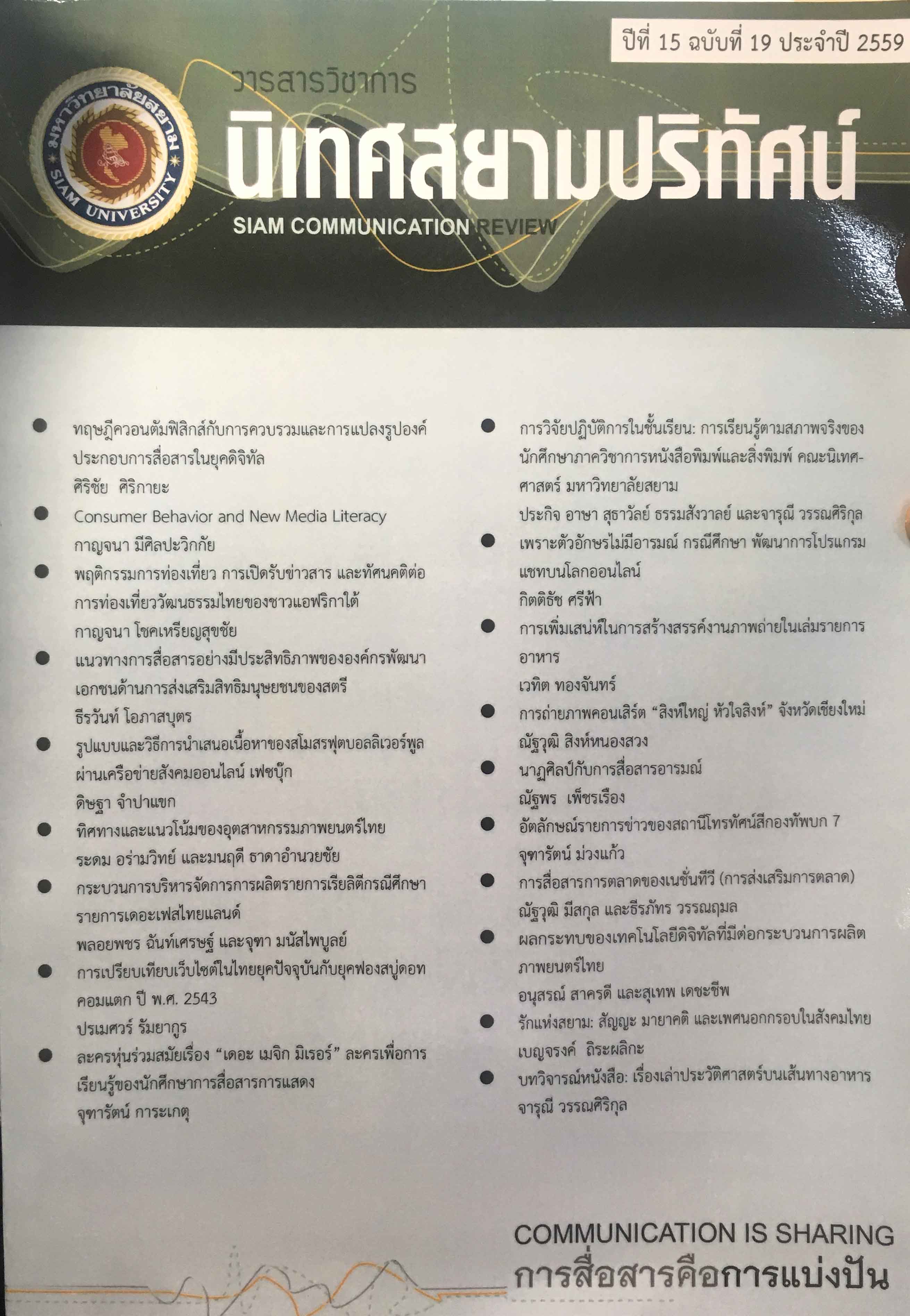Because the Letters Don’t Indicate any Emotion Case Study: Development Chat Online
Main Article Content
Abstract
A form of communication in modern times vary depending on the progress of technology. People want to communicate with each other more. The needs of communicate these results in the form of new communication. In addition, the Internet is another variable that makes communication patterns change rapidly. Caused chat in many different forms through the Internet and with higher demand without a limit, combined with the rapid development of technology resulted in changes to the process. Since the demand for chat between computers to talk to each other via chat, phone and pager of chat talk just a letter with letter. Later it turns out that the letter was not sufficient to communicate because the letter does not indicate a mood or emotion of the sender was. Therefore, it has evolved from a character that we called “Line sticker” In order to communicate with them more effectively resulted chat applications have been widely recognized as a global business. By observing the student who wrote a tutorial on designing stickers Female students showed the author’s interest in the production line sticker is very well produced out satisfactorily. From the observation that students use chat all the time make students understand the material very well. And to create characters as easily because the mood for a chat itself would have understood what yourself or most people want to communicate. Therefore, it makes that communication through chat application letters with characters that do not necessarily have enough help convey more emotion. The letter makes no mood to ineffective communication.
Article Details
References
ฌานภาณุ มงคลฤทธ์ิ. (2553). ทัศนคติและพฤติกรรมของผู้บริโภคที่มีต่อการตลาดและการละเมิดสิทธิส่วนบุคคลบนเว็บไซต์เครือข่ายสังคมออนไลน์ (วิทยานิพนธ์ปริญญามหาบัณฑิต ไม่ได้ตีพิมพ์). จุฬาลงกรณ์มหาวิทยาลัย, กรุงเทพฯ.
ทัตธนันท์ พุ่มนุช. (2553). การศึกษาพฤติกรรมการใช้เครือข่ายสังคม (Social Network) เพื่อพัฒนาในการปฏิบัติงานของบุคลากรทางการศึกษาในสานักงานเขตพื้นที่การศึกษาประถมศึกษานครปฐม. Veridian EJournal,5(1), 523-540. สืบค้นจาก https://www.tci-thaijo.org/index.php/Veridian-E-Journal/article/view/28156/24195
วิฑูรย์ เลิศประเสริฐพันธ์. (2543). การศึกษาปัจจัยที่มีผลต่อพฤติกรรมการใช้อินเทอร์เน็ตของวัยรุ่นในชีวิตประจำวัน กรณีศึกษาเฉพาะ นักศึกษามหาวิทยาลัยหอการค้าไทย (วิทยานิพนธ์ปริญญามหาบัณฑิต ไม่ได้ตีพิมพ์). มหาวิทยาลัยหอการค้าไทย, กรุงเทพฯ.
สุรพงษ์ โสธนะเสถียร. (2533). การสื่อสารกับสังคม. กรุงเทพฯ: จุฬาลงกรณ์มหาวิทยาลัย.
อรวรรณ วงศ์แก้วโพธิ์ทอง. (2553). Social Media เครื่องมือเพิ่มศักยภาพทางธุรกิจ. วารสารนักบริหาร, 30(4), 63-69.


